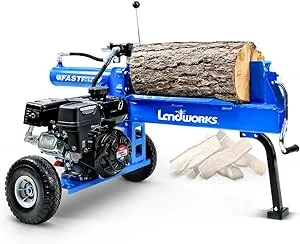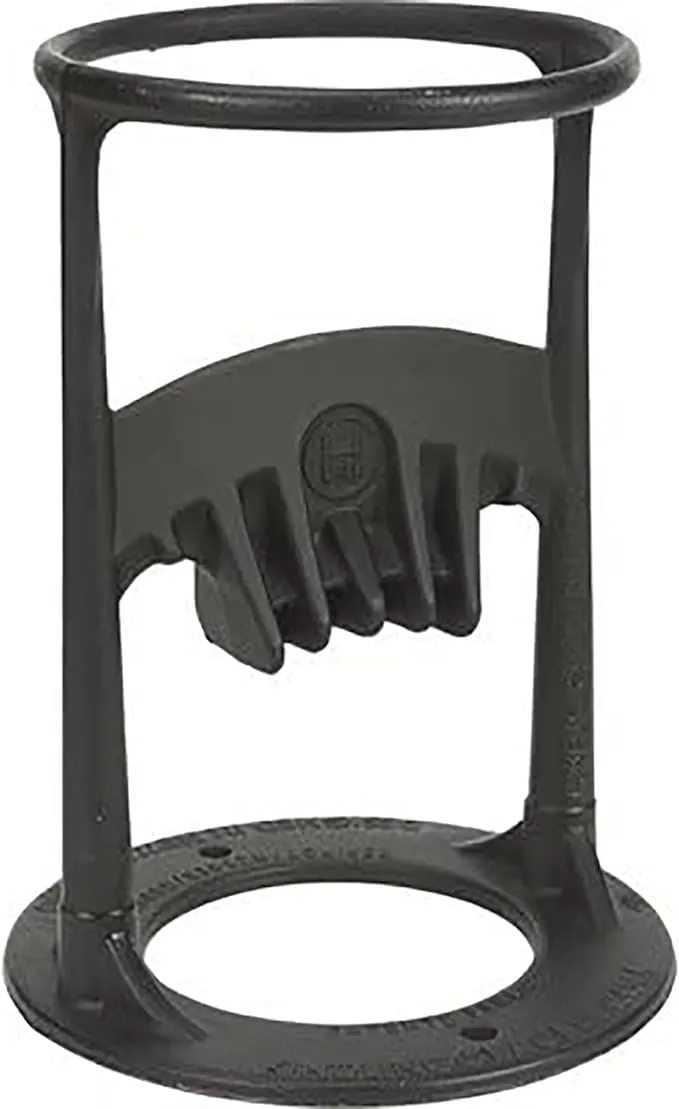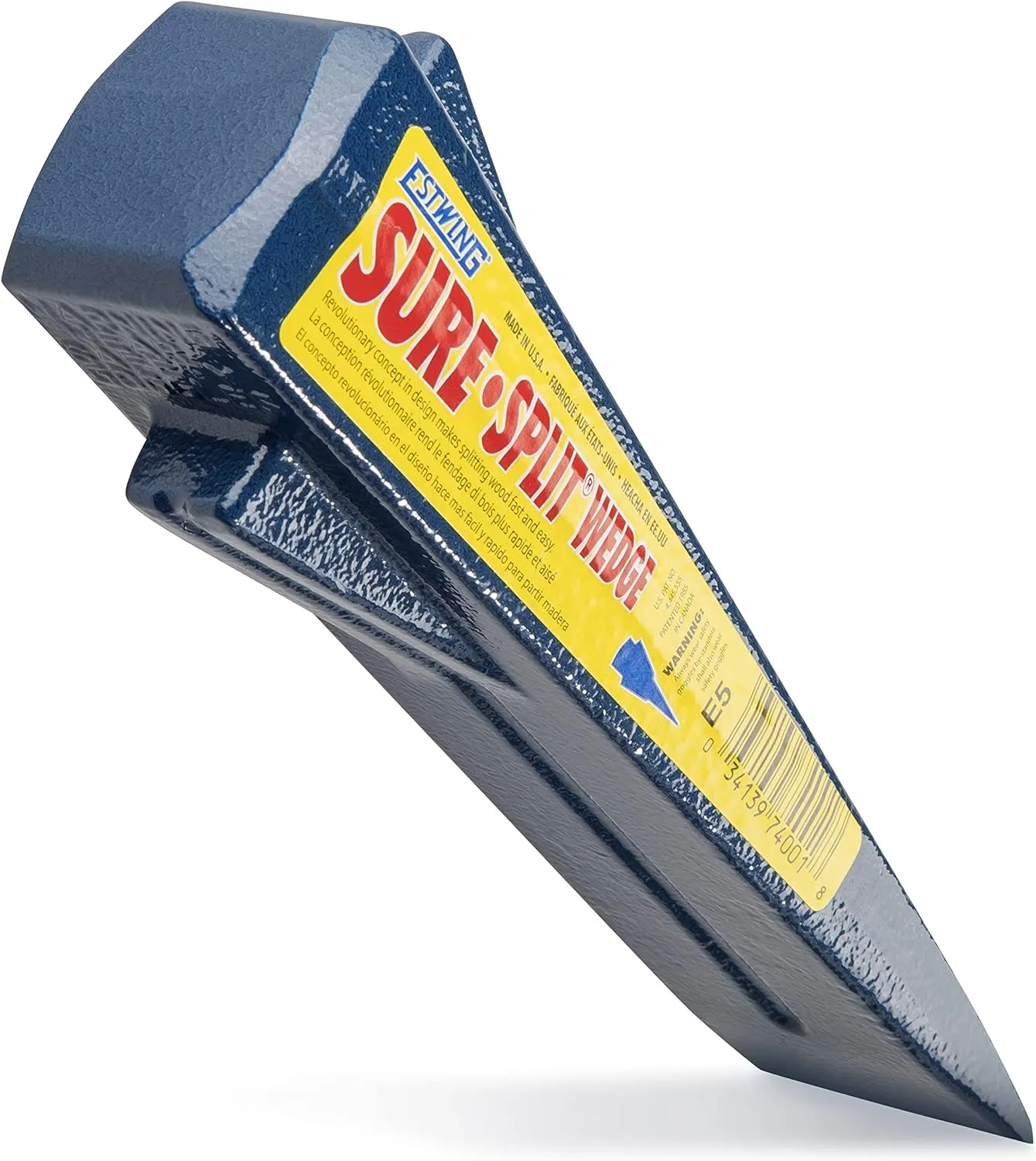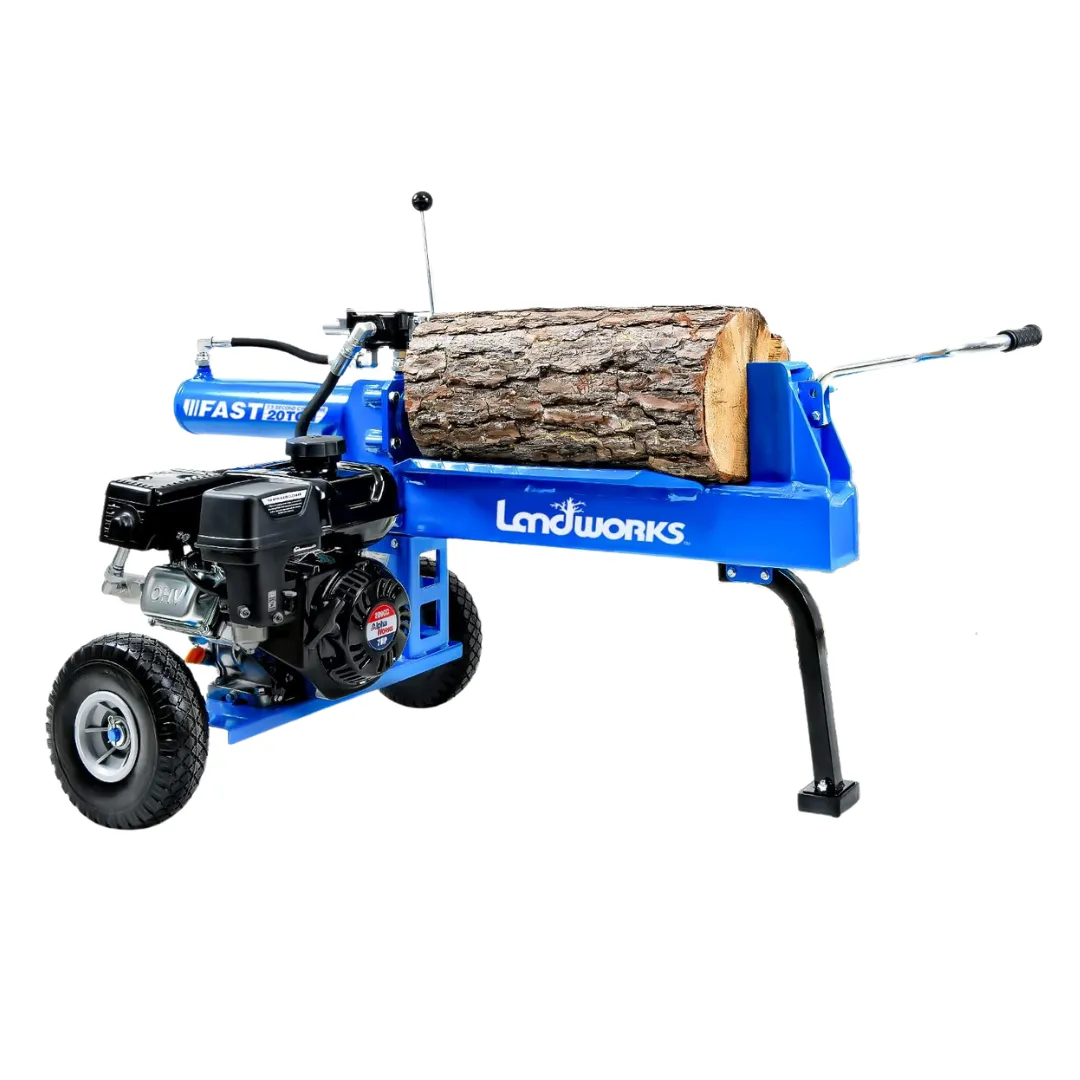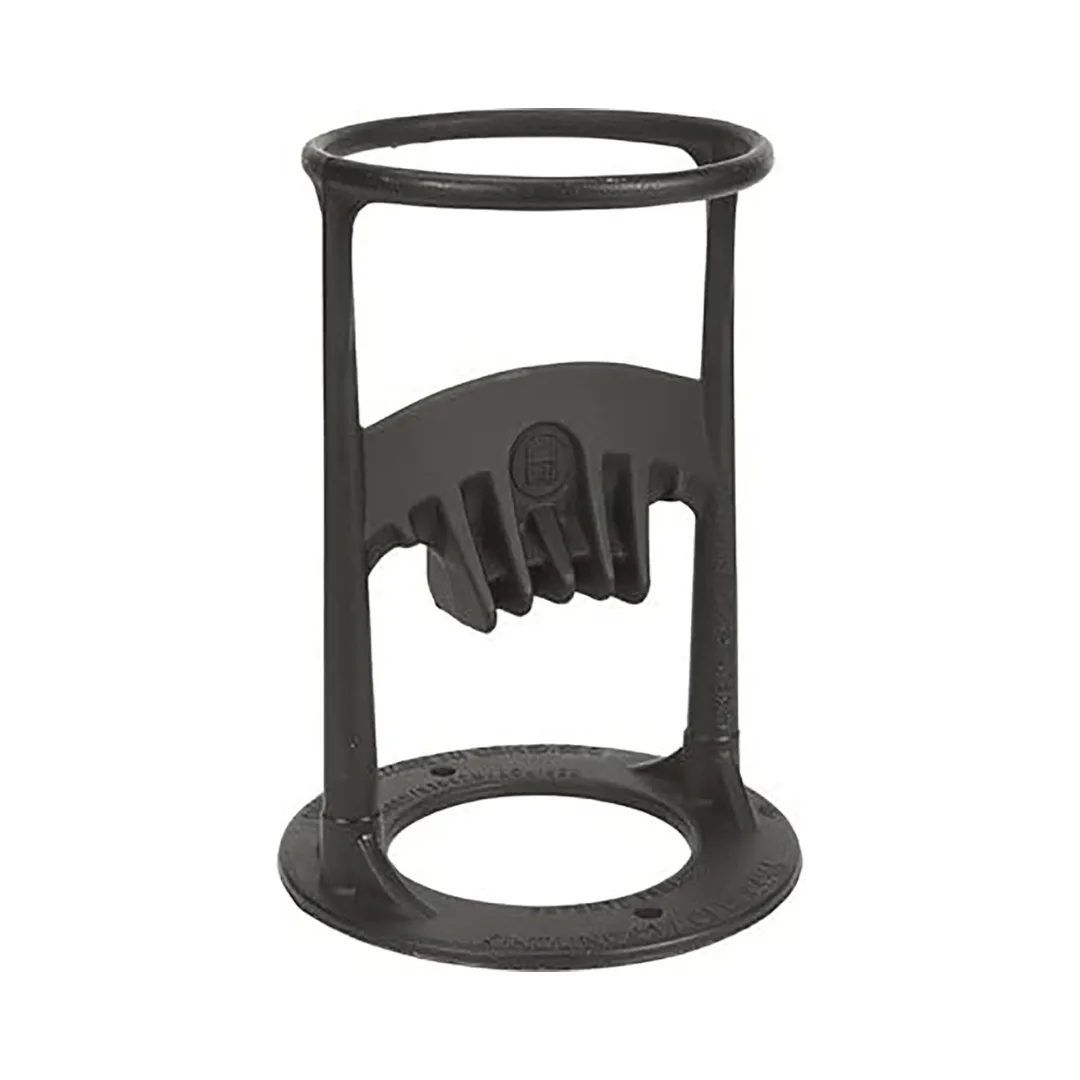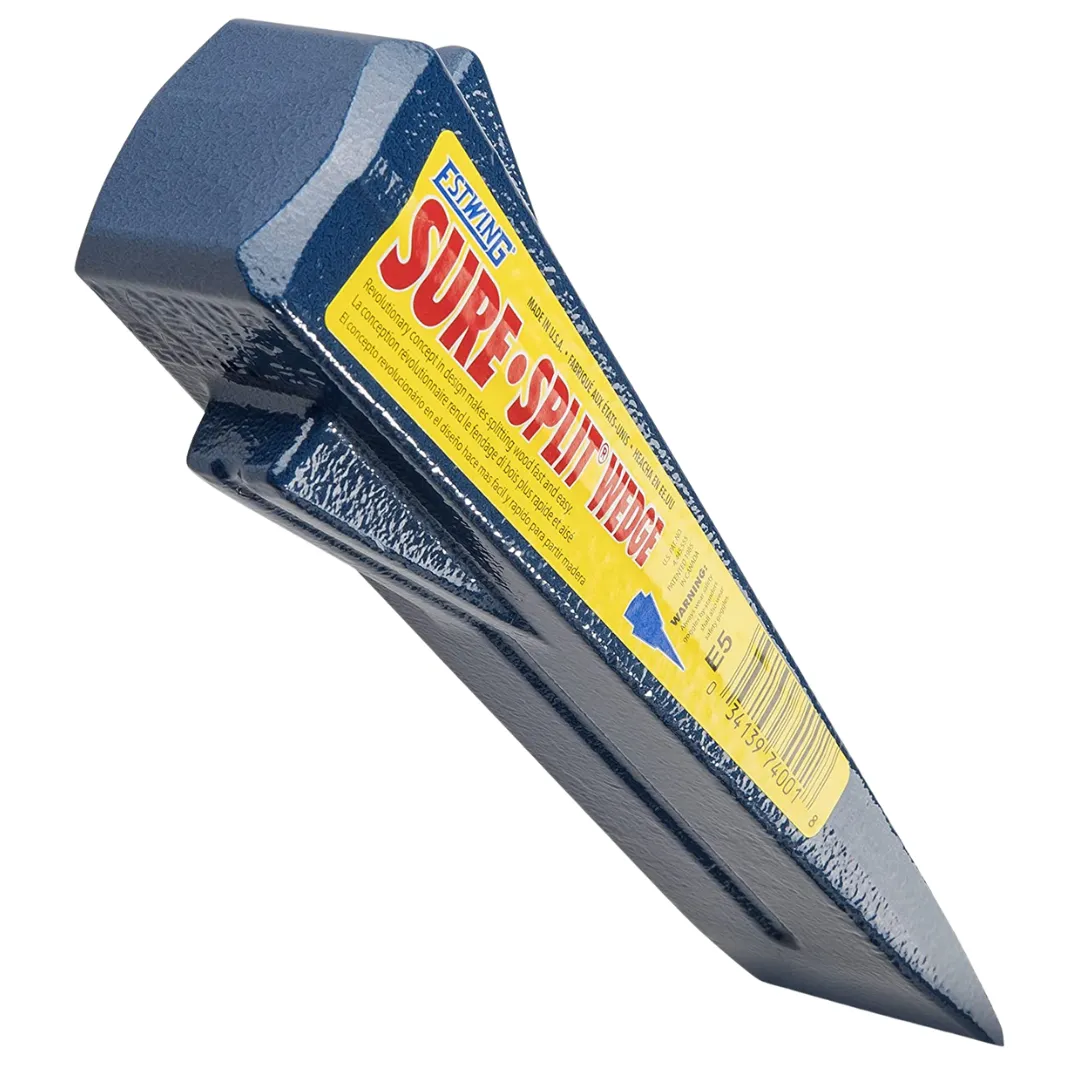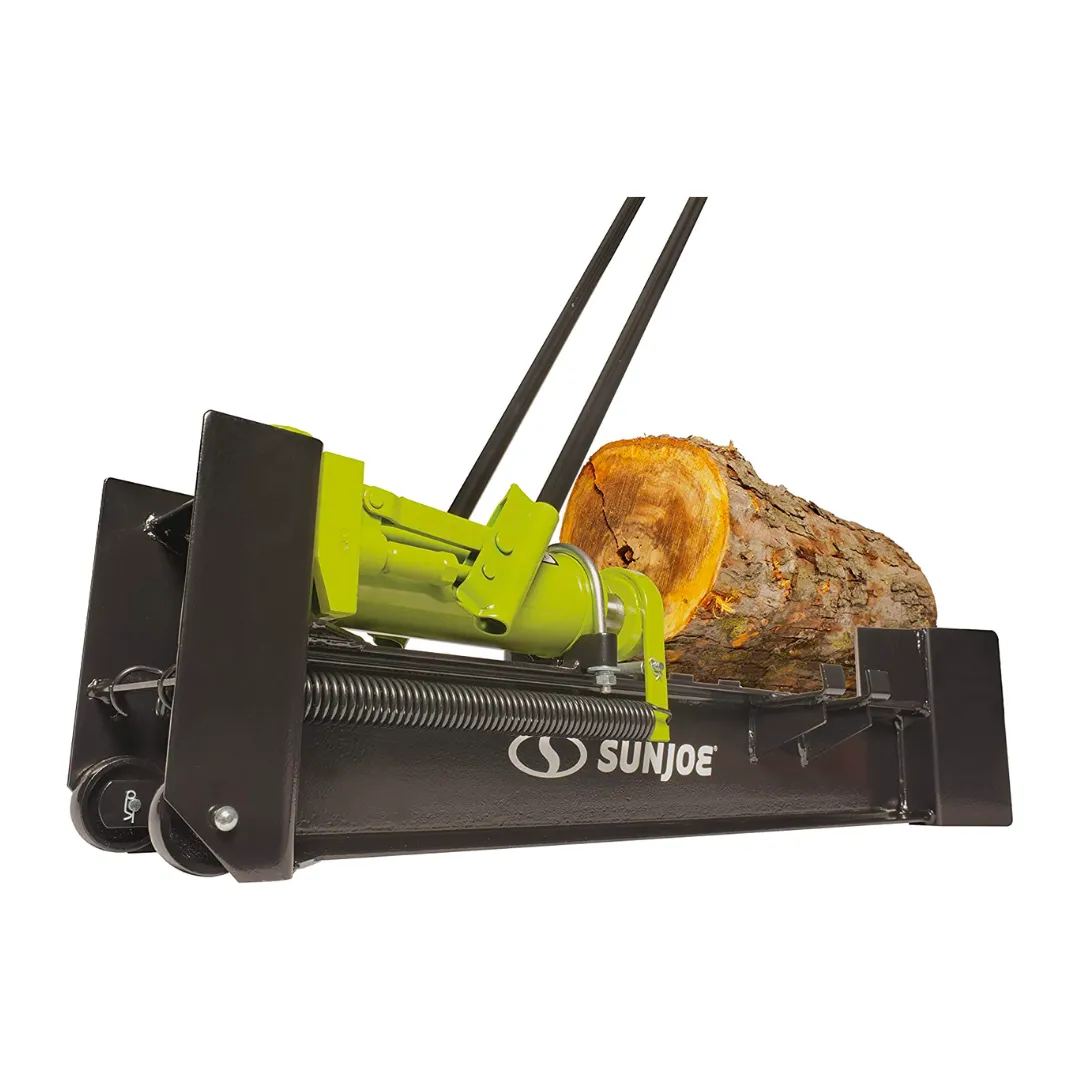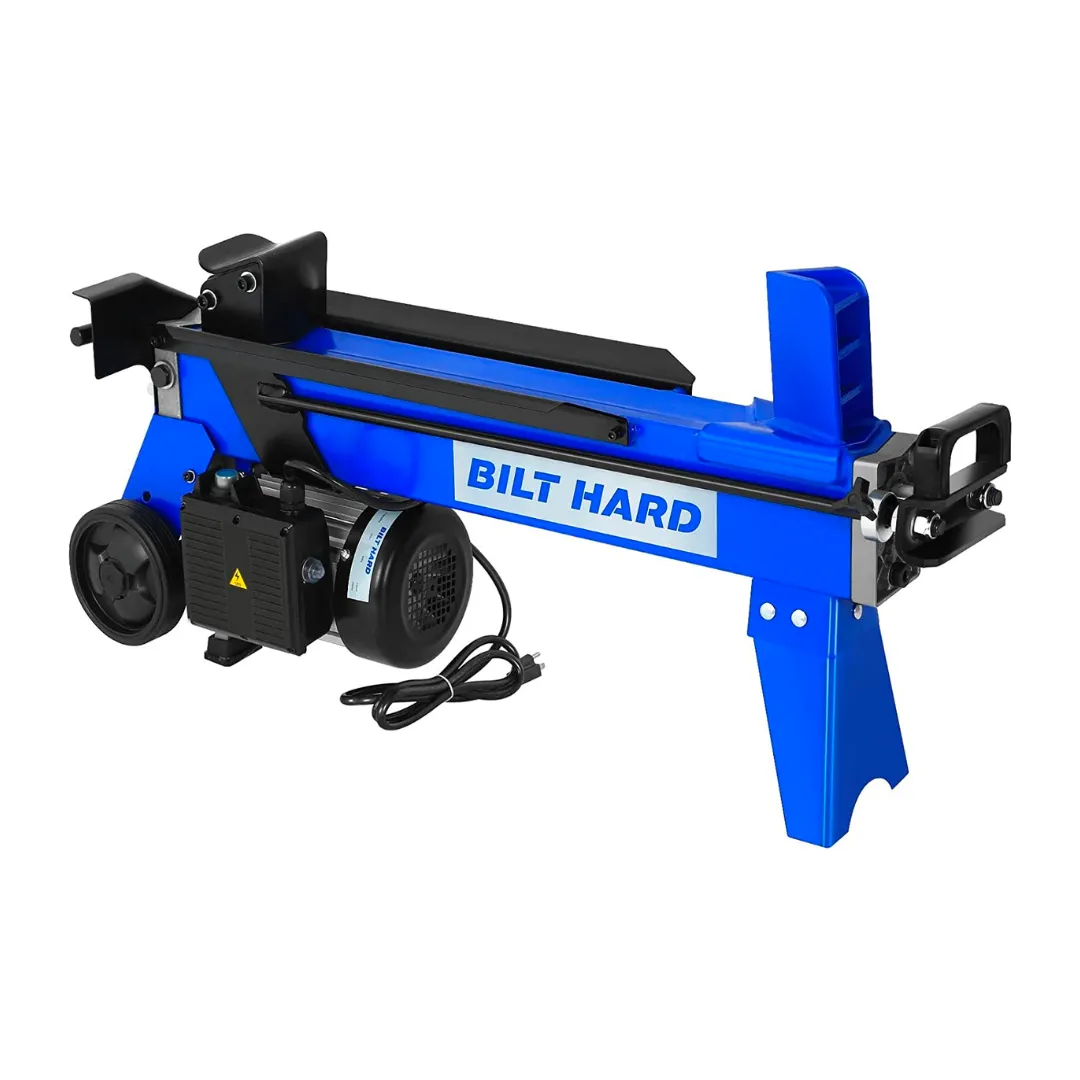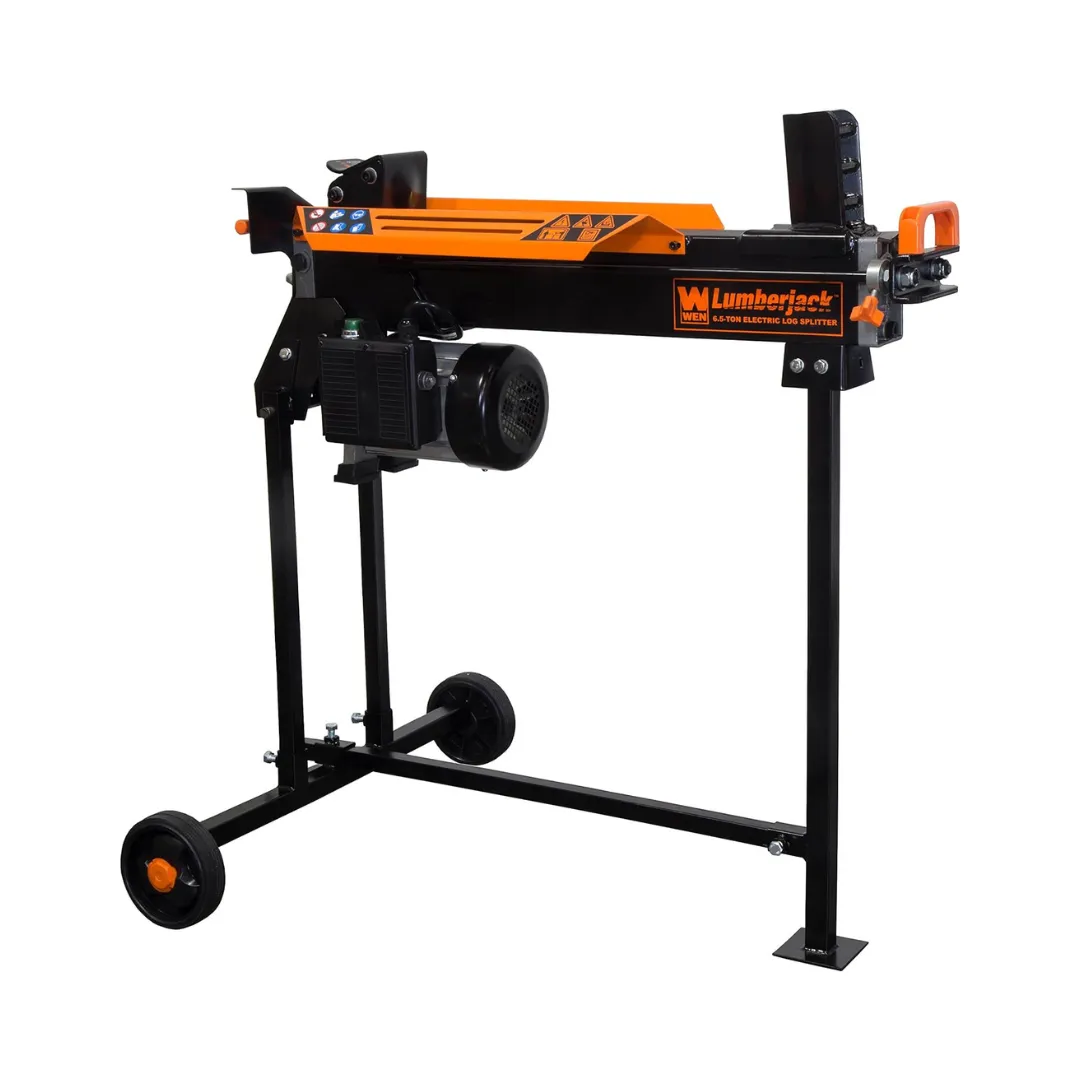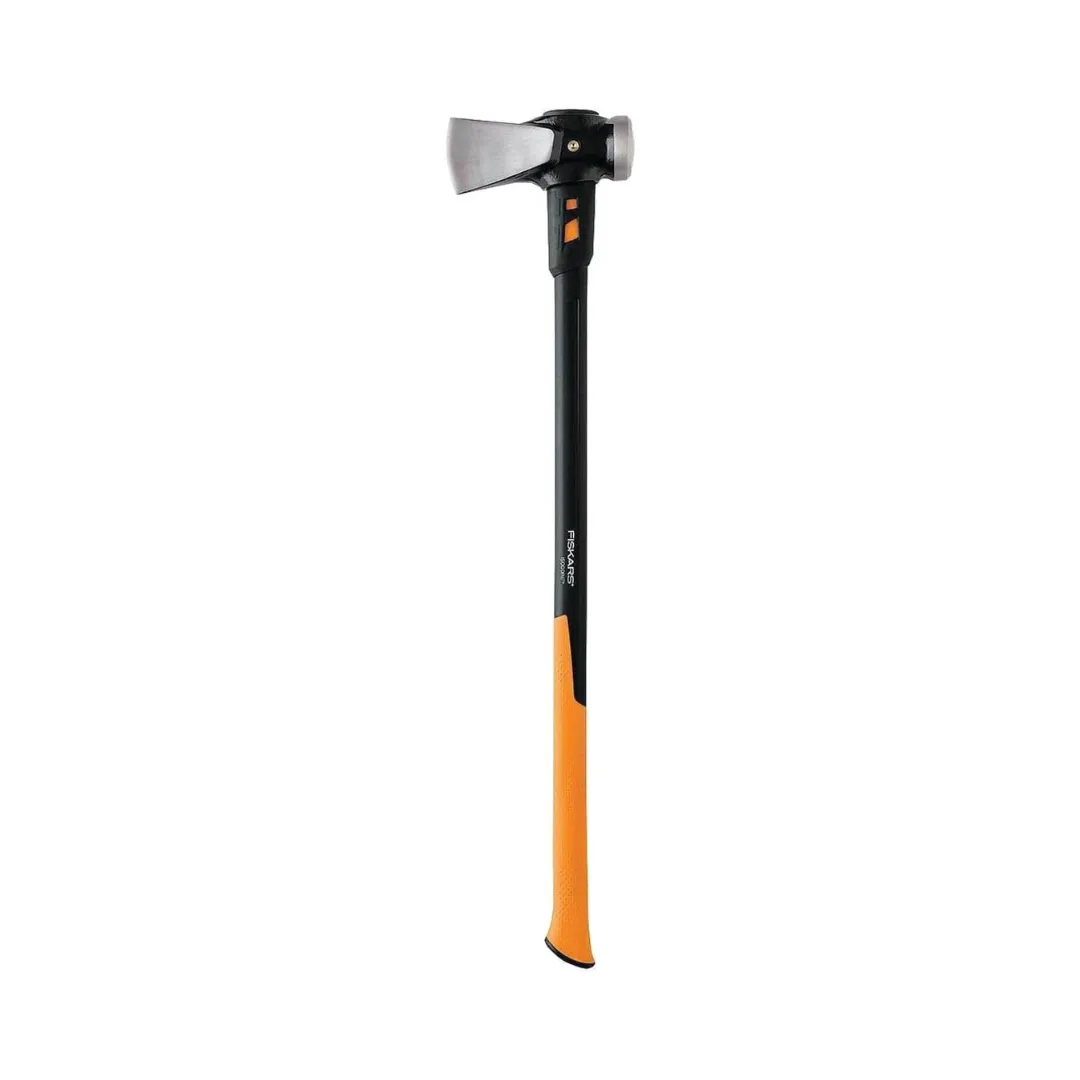We may be compensated if you purchase through links on our website. Our team is committed to delivering honest, objective, and independent reviews on home products and services.
Splitting logs can be a hassle without the right tools. A log splitter is a simple but powerful tool that helps homeowners split logs into usable pieces of firewood. From manual splitting wedges to electric-powered machines, this useful tool comes in a variety of designs.
However, log splitters vary significantly depending on their design. Some heavy-duty models are ideal for splitting wood at large jobsites, while smaller, manual splitters should only be reserved for splitting small pieces of firewood. This variation leads to a wide price range. High-quality manual splitters can cost as little as $25, while powerful electric splitters can cost up to $1,000 or more. Overall, our choice for the best log splitter is the Landworks Portable Log Splitter for its heavy-duty design and high power level. However, if you’re looking for something for a lower price, there are also several other great options available.
To help you find the best option for you, the This Old House Team created this guide to help you find the best splitters for your home or work. Here are our top picks.
Compare the Best Log Splitters
| Product | Type | Material | Weight | Dimensions | ||
|---|---|---|---|---|---|---|
| Landworks Portable Log Splitter | Gas-powered | Stainless steel | 146 pounds | 35 x 22.6 x 16.8 inches | ||
| Kindling Cracker Firewood Splitter | Manual | Cast iron | 10 pounds | 9 x 13 x 9 inches | ||
| Estwing Sure Split Wedge | Manual | Alloy steel | 1 pound | 8.9 x 2.5 x 1.8 inches | ||
| Sun Joe LJ10M 10-Ton Hydraulic Log Splitter | Manual hydraulic | Steel | 87 pounds | 41.1 x 8.1 x 11.8 inches | ||
| BILT HARD Electric Log Splitter | Electric | Steel | 98 pounds | 36.4 x 10.4 x 18.3 inches | ||
| WEN 56208 Electric Log Splitter | Electric | Steel | 119 pounds | 38.5 x 28.3 x 39.3 inches | ||
| Fiskars IsoCore Wood Splitting Maul | Manual | Wood | 10 pounds | 36 x 8 inches | ||
| Product | Type | Material | Weight | Dimensions |
Best Log Splitters: Our Top 7 Picks
- Best Overall: Landworks Portable Log Splitter
- Best Manual Splitter: Kindling Cracker Firewood Splitter
- Best Splitting Wedge: Estwing Sure Split Wedge
- Best Manual Hydraulic: Sun Joe LJ10M 10-Ton Hydraulic Log Splitter
- Best Electric Hydraulic: BILT HARD Electric Log Splitter
- Best Stand: WEN 56208 Electric Log Splitter
- Best Axe: Fiskars IsoCore Wood Splitting Maul
Best Overall
Good for: Professionals or serious DIYers looking for a powerful log splitter.
What Customers Are Saying
Positively, customers who reviewed this gas log splitter said that it was very powerful, consistently handled larger logs, and was easy to assemble. They also valued its 10-inch, all-terrain wheels for portability. Unfortunately, some reviewers said that the filter screen in the fluid reservoir came loose.
“I’ve had 2 other compact splitter in my life. A 7-ton and a 9-ton. Neither had the power or durability that could handle the logs that I have on my property. I have this really [tough] splitting wood that burns great! It takes forever to split it, but not anymore. I’m completely satisfied with my purchase and would recommend it to anyone!” —Lugo via Amazon
“Overall the unit works well, but has one major flaw to look out for. The filter screen in the fluid reservoir will come loose and lodge in the fluid line that runs to the pump. Contacted tech service, and they said that the screen is not needed, and to remove it completely. This is a known issue, and apparently the factory was supposed to start removing these filters. If you remove this when you build the unit, you should be good to go. Do this before you have to drain 50 bucks of hydraulic fluid to remove it!” —Boiler98 via Amazon
Best Manual Splitter
Good For: Those looking for a manual splitter for firewood or home DIY projects.
What Customers Are Saying
Many customers were able to split wood easily with this manual tool. They also loved the clean, stable design. Unhappy reviewers criticized this manual wood splitter for not being strong enough to split tough wood, such as oak.
“I use this tool as an easier way to split smaller logs into kindling, and I find it much easier than trying to balance an increasingly small bit of wood for long enough to split with a maul or hatchet. Plus, it makes me less nervous about my fingers! There are many versions [to] choose from and ultimately I picked this one because it’s cast as one piece of iron rather than welded or bolted together. I’m pleased with the quality and would buy it again.” —A. de Lisle via Amazon
“I tried the kindling splitter to split oak wood that was cut 14 months ago. I used a 2 lb. mallet on first try. Then, I moved up to a 4 lb. mallet. Tried 2 different pieces of oak. Neither could be pushed onto the blade more than 1/2″ after repeated hits with the mallet. I mounted the splitter onto a 1″ thick board, and I was trying this on the flat surface of my porch. I suppose I would need to use a sledge hammer much larger than what is shown in the photos and product videos.” —David Carlton via Amazon
Best Splitting Wedge
Good For: Those looking to split small pieces at home with a manual wedge.
What Customers Are Saying
Although this simple log splitter took more effort for customers compared to using gas- or electric-powered splitters, they said that the steel was durable, sharp, and evenly split logs of wood. They also reported that the splitting wedge had little to no “bounce.” Alternatively, others reported significant bounce despite multiple techniques, and the wedge didn’t arrive pre-sharpened for one user.
“Using to split fireplace length logs < 16″ diameter. Have yet to find log it won’t split. I use a 3-lb. hammer with short handle, so no swinging a splitting maul or axe and missing the wedge. The side wedges work well to open up stubborn logs. The tip is sharp, so it sticks in the log with a light hit. Excellent!” —tfsmith2 via Amazon
“I too experienced ‘bounce out’. And while the slipperiness of the paint may contribute, the tip of the wedge doesn’t seem to. For me bounce out only occurred when the two fingers/wings were engaging the wood. Those protrusions may improve its splitting characteristics in harder woods, but softer/wetter woods tend to simply deform around them. The construction of the wedge is great. The hardness of the alloy used allows for some deformation of the striking face, without dangerously fracturing off shards. I expect it’ll last a long time — in part because, of the three wedges I have, it’s the last one I reach for.” —Scott via Amazon
Best Manual Hydraulic
Good For: Homeowners who need to cut several large logs at a time.
What Customers Are Saying
Amazon customers noted that this log splitter was worth the money because of its power and ease of use. Unhappy reviewers said that the splitter couldn’t hold up to regular use, making it better for those who only need to split wood occasionally.
“Lives up to the hype! I couldn’t be happier with this splitter. It’s as effortless a manual splitter as you’ll find anywhere and couldn’t be easier to store away between jobs. Excellent value!” —David Carlton via Amazon
“After reading the reviews I really wanted to like this splitter. What I really wanted was something that was a little easier physically with the understanding that it might be a little slower. Instead this splitter is ridiculously slow but also very easy. It was so slow I couldn’t see myself using it to do more then a cord of wood max. The time it takes I would rather just chop the wood by hand. I could see it being useful for someone that just has a couple fires every year. Or maybe someone that goes camping every year and wants to take split wood for a fire.” — Quency via Amazon
Best Electric Hydraulic
Good For: Customers looking for a powerful electric splitter for at-home or professional use.
What Customers Are Saying
Overall, customers valued the heavy-duty splitting performance of this electric log splitter, including that the machine was simple to maintain and operated as advertised. However, there were some complaints about the unit lacking power to handle large logs.
“Having mostly used gas log splitters through the years, I was skeptical how well an electric splitter would work. The product arrived well packaged and fully assembled. I had a pile of seasoned maple from 3 to 14 inches in diameter. I took 2 days to split up the pile. The log splitter worked flawlessly. A number of logs were too long to fit horizontally. Instead of taking time to cut them shorter, I stood the logs up on the splitter and tried splitting them. To my surprise, again it worked perfectly. The unit is heavy and a bit of a pain to pull by hand and it would be nice to be able to split longer logs but for the price, this splitter is awesome. I split a cord of wood with no noticeable wear and tear on the splitter.” —Greg via Amazon
The only logs I could get this device to split from my wood pile were well-seasoned logs already small enough to burn in our indoor fireplace. I bought the splitter to split larger logs into two pieces before burning inside our home but the power is just not there. It seems to be working as advertised but is simply not strong enough for what I was hoping to use it for. If you need to split small, fully-seasoned wood already suitable for indoor burning into even smaller pieces, it works well.” —JeffParavano via Amazon
Best Stand
What Customers Are Saying
We noted that customers who were pleased with this WEN log splitter’s dynamic performance and ability to quickly cut through wood. Others were impressed with its stand, noting that it allowed users to split wood without bending over. However, some customers said this splitter was heavy and difficult to move around, and others found that you sometimes needed multiple people to operate the machine correctly.
“Love this splitter. It’s quiet and moves slowly enough so you can get your hands out of the way. The stand it sits on is wonderful! You don’t have to bend over to use it. It also has wheels , so it’s not very hard to move it around for storage. It does a good job splitting wood and has reduced the back-breaking labor required to split and stack.” — Stylish Skater via Amazon
“This log splitter works really well, but it’s heavy to move around. Loading it up into [the] truck and takes two people to pick up. It split the logs easily, but the press itself is kinda round so when it’s pushing the log towards the blade, the log slips out. You have to literally put your weight on it in order for it not to pop out of the press. My recommendation is that they put some type of teeth on it so that it grips onto the log and it does not slip out. Other than that it works really well.” —Eddie Rodrigues via Amazon
Best Axe
What Customers Are Saying
We noted that customers who were impressed with this splitting axe were particularly pleased with its durable construction, comfortable handle, and powerful blade. However, some felt as though it didn’t hold up to heavy-duty splitting jobs, and others noted they found that it dented easily.
“I bought this for some light firewood splitting in my backyard. This works very well — it splits clean and easy, and when it doesn’t, it holds up well to strikes from a sledgehammer blow to the back. I even tried this on some gigantic pieces — I was trying to split off some big slabs from a 40″ diameter log and when the wedge became embedded, I tried pulling the handle left and right and never felt like the handle was going to snap or bend. I’m glad I paid I little bit more for Fiskars quality.” —J. Hallahan via Amazon
“Good size, was able to swing it in a confined space, heavier than the one I already own, which helped increase the force. However, the mattock end is very dull. I was hoping to cut trough a small root, but it just bounced off. Not even the slightest dent. I ended up using the pick end, which just shredded the root, along with a pruner. It took far longer.” —Pria via Amazon
What You Need To Know Before Buying a Log Splitter
Understanding how a log splitter works will help you decide which model is best for your splitting needs. In order to find the best product for your needs, you’ll first have to decide if you’re seeking manual, hydraulic, electric, or gas. Additionally, you should take time to consider the splitter’s capacity, mobility, cycle time, and maintenance before deciding which splitter is best for you. Read our buying guide below for more key information about log splitters.
Power Source
The most common types of log splitters are manual-, hydraulic-, electric-, and gas-powered models. Manual log splitters are compact cylinders that are typically built with cast iron and equipped with a splitting wedge. These splitters are the most affordable option, but they are labor-intensive and can’t cut larger pieces of wood.
Hydraulic log splitters use a handle or lever to trigger a hydraulic pump that forces wood through a sharpened wedge. Hydraulic splitters are less labor-intensive than manual models, but they still require some effort on the user’s part.
Electric-powered log splitters are corded models that can be used anywhere there’s an electrical outlet. They’re selected by homeowners because of their low-maintenance design and powerful performance. While electric-powered log splitters can cycle through a high number of logs every hour, particularly models with a large horsepower, they aren’t as powerful as their gas counterparts.
Gas-powered splitters contain engines that produce a powerful force capable of splitting a log in seconds. Because of their power and efficiency, gas models are typically the most expensive and heaviest log splitters on the market.
Capacity
The capacity of a log splitter refers to the largest log it can chop. Manual log splitters usually have the lowest capacity, chopping wood that’s only about a foot tall. Gas-powered log splitters usually have the largest wood capacity, cutting 100-pound logs that are over 22 inches long.
Mobility
Most electric- and gas-powered log splitters come with wheeled stands that allow for easy transportation. In general, electric log splitters will have a detachable, wheeled stand that gives users the option to place the frame on the ground or at waist level. Gas log splitters are usually constructed with permanent wheels, and some models even offer a ball hitch for vehicle towing.
Cycle Time
Cycle time refers to how long it takes a log splitter to chop a single log. Cycle time is reserved for electric- or gas-powered models that don’t require manual effort. While electric-powered splitters have a cycle time of around 20 seconds, gas-powered models can split logs in under 15 seconds.
Maintenance
Even the most basic of log splitters need to be sharpened to cleanly and evenly split pieces of wood. Gas and electric models, however, require additional maintenance, such as lubricating components, adding more fuel, cleaning the filter, and carefully storing the machine in a dry, covered area.
Safety Tips for Using a Log Splitter
Using a log splitter can be dangerous if you don’t know what you’re doing and use it recklessly. In order to ensure you’re using a log splitter properly, it’s important to always follow these safety protocols.
- Read instructions and wear proper gear: Before use, read the manufacturer’s instructions closely to familiarize yourself with proper operating procedures and safety precautions. Before you start, you should also make sure you’re wearing the proper equipment such as safety glasses, steel-toe boots, work gloves, and ear protection. Tie back long hair and avoid wearing loose clothing or jewelry that could get caught in moving parts.
- Prepare the workspace: Prepare the log splitter on a flat, stable surface and ensure all guards and shields are in place. Check the oil and gas levels. Inspect the hydraulic hoses for leaks or cracks—worn hoses can rupture under pressure. Make sure the splitter is on solid, level ground. If it has wheels, chock them to prevent rolling. Clear the area of debris, bystanders, and pets.
- Postion logs and use controls cautiously: Place logs squarely on the beam against the end stop. Make sure your hands and body are out of the way before engaging the wedge. When splitting, only use your hands to operate the controls. Never use any other body part to substitute as a push stick. Making log splitting a two-handed operation will also help keep the logs balanced.
- Split logs carefully and intentionally. Apply even pressure when pushing the control lever, and listen for the engine struggling—that likely means the log is too knotted or twisted to split safely. Release the lever to return the wedge and reposition troublesome logs instead of forcing them.
- Stay focused on the task: Stay focused on the task at hand while splitting logs. Don’t rush through it, as this could lead to mistakes. If you become tired, take a break. A moment of impatience or inattention is enough for an accident to occur.
Frequently Asked Questions About Log Splitters
Are log splitters worth the money?
A log splitter can be worth the money if you have a wood-burning stove or fireplace that you use on a daily basis since it can save you time by simplifying the process of chopping firewood. While log splitters can be an investment, there are affordable manual and hydraulic models available for cutting small pieces of wood. If you need to split bundles of large logs on a regular basis, the cost of an electric- or gas-powered log splitter may be worth it.
Are log splitters dangerous?
Log splitters pose a safety risk if they’re not used properly. Read the included instructions before turning yours on, and be mindful of sharp edges even with a manual splitter. Also wear work gloves, safety glasses, long pants, and close-toed shoes.
Is it easier to split wet or dry firewood?
While you can split both wet and dry firewood, it’s easier to split dry wood because its low moisture content decreases resistance.
What is the best log splitter for a person with arthritis?
The best log splitter for a person with arthritis is one that requires minimal manual effort. For this reason, we recommend a gas or electric-assist log splitter rather than a splitting wedge.
Why Trust The This Old House Team
This Old House has empowered homeowners for more than four decades with top-notch home improvement content in the form of television programs, print media, and digital content on its website and social media platforms. The This Old House Team focuses on creating in-depth product and service review content to help inform your purchasing decision for just about any item or resource that you might need for your home. The This Old House Team has written over 1,000 reviews on products in the home space, from cordless drills to kitchen trash cans, lawn mowers, and dining room decorations.
We recommend products in each review using an intensive research process, spending hours combing through the best available models on Amazon. For a product to make our list of top picks, it must hold a solid sales record on Amazon, have consistently positive customer reviews, and offer unique features, among other factors. After narrowing down our list of recommendations, we conduct additional research and sometimes in-person testing to ensure that the products meet our standards. Once we conclude the research phase, we craft a well-rounded, user-friendly article that includes our recommended products and additional information to help homeowners like you make the right purchase.
To share feedback or ask a question about this article, send a note to our team at reviews@thisoldhousereviews.com.
